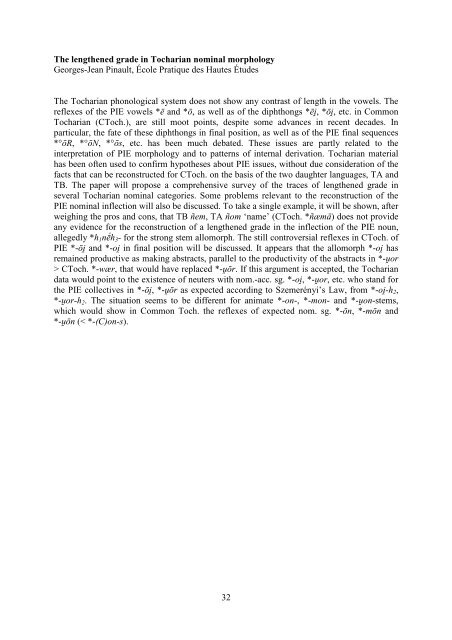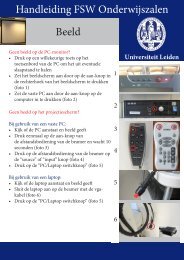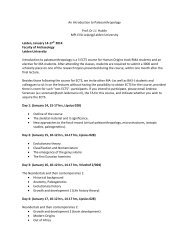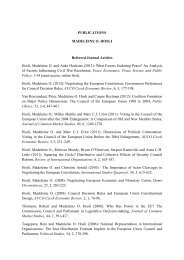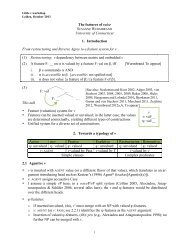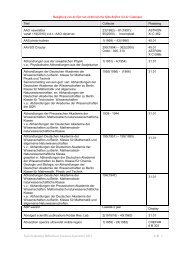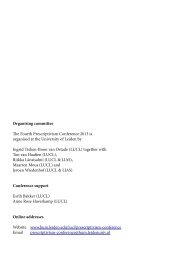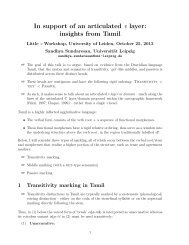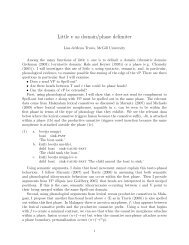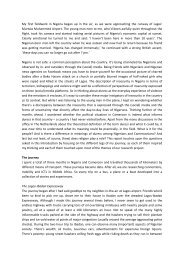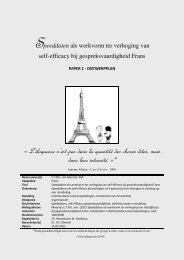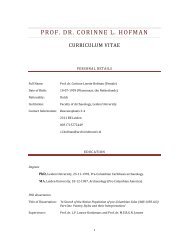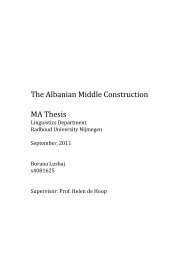Programme
Programme
Programme
Create successful ePaper yourself
Turn your PDF publications into a flip-book with our unique Google optimized e-Paper software.
The lengthened grade in Tocharian nominal morphology<br />
Georges-Jean Pinault, École Pratique des Hautes Études<br />
The Tocharian phonological system does not show any contrast of length in the vowels. The<br />
reflexes of the PIE vowels *ē and *ō, as well as of the diphthongs *ēi̯ , *ōi̯ , etc. in Common<br />
Tocharian (CToch.), are still moot points, despite some advances in recent decades. In<br />
particular, the fate of these diphthongs in final position, as well as of the PIE final sequences<br />
*°ōR, *°ōN, *°ōs, etc. has been much debated. These issues are partly related to the<br />
interpretation of PIE morphology and to patterns of internal derivation. Tocharian material<br />
has been often used to confirm hypotheses about PIE issues, without due consideration of the<br />
facts that can be reconstructed for CToch. on the basis of the two daughter languages, TA and<br />
TB. The paper will propose a comprehensive survey of the traces of lengthened grade in<br />
several Tocharian nominal categories. Some problems relevant to the reconstruction of the<br />
PIE nominal inflection will also be discussed. To take a single example, it will be shown, after<br />
weighing the pros and cons, that TB ñem, TA ñom ‘name’ (CToch. *ñæmä) does not provide<br />
any evidence for the reconstruction of a lengthened grade in the inflection of the PIE noun,<br />
allegedly *h 1 nḗh 3 - for the strong stem allomorph. The still controversial reflexes in CToch. of<br />
PIE *-ōi̯ and *-oi̯ in final position will be discussed. It appears that the allomorph *-oi̯ has<br />
remained productive as making abstracts, parallel to the productivity of the abstracts in *-u̯ or<br />
> CToch. *-wær, that would have replaced *-u̯ ōr. If this argument is accepted, the Tocharian<br />
data would point to the existence of neuters with nom.-acc. sg. *-oi̯ , *-u̯ or, etc. who stand for<br />
the PIE collectives in *-ōi̯ , *-u̯ ōr as expected according to Szemerényi’s Law, from *-oi̯ -h 2 ,<br />
*-u̯ or-h 2 . The situation seems to be different for animate *-on-, *-mon- and *-u̯ on-stems,<br />
which would show in Common Toch. the reflexes of expected nom. sg. *-ōn, *-mōn and<br />
*-u̯ ōn (< *-(C)on-s).<br />
32


